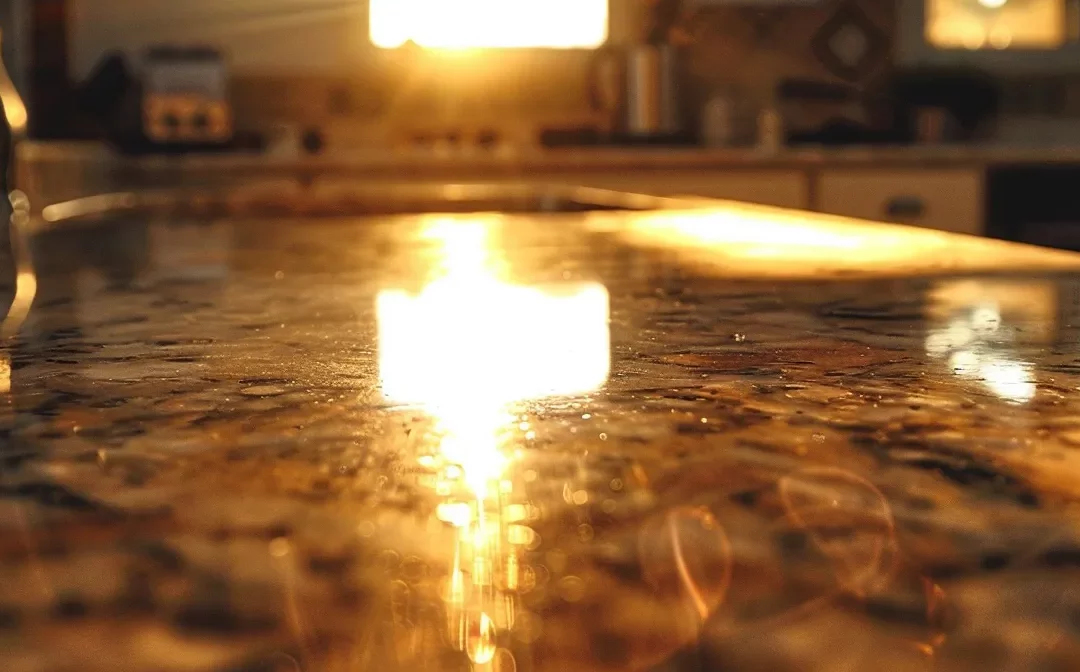Table Of Contents:
- Key Takeaways
- Introduction to Benchtop Resurfacing
- Introduction to Benchtop Resurfacing
- Key Factors That Affect Benchtop Resurfacing Costs
- Key Factors That Affect Benchtop Resurfacing Costs
- Breaking Down the Average Cost of Benchtop Resurfacing
- How to Obtain an Accurate Resurfacing Quote
- Strategies to Minimize Benchtop Resurfacing Expenses
- Frequently Asked Questions About Resurfacing Costs
- Conclusion
Are you wondering about the average cost of benchtop resurfacing? Many homeowners face the challenge of updating their kitchens without breaking the bank. In this article, you’ll learn about the key factors that influence resurfacing costs, including material options like Corian, and the benefits of choosing environmentally friendly solutions. We will also provide strategies to minimize expenses and explain how to obtain an accurate resurfacing quote. By the end, you’ll have a clearer understanding of the financial commitment involved, helping you make an informed decision for your kitchen upgrade.
Key Takeaways
- benchtop resurfacing is a cost-effective alternative to complete replacement
- the lifespan of resurfaced surfaces can reach up to 10 years with proper maintenance
- laminate, solid surface, and quartz are suitable materials for resurfacing projects
- minimal disruption during resurfacing allows you to maintain your daily routine
- selecting budget-friendly materials can significantly lower your resurfacing expenses without sacrificing quality
Introduction to Benchtop Resurfacing
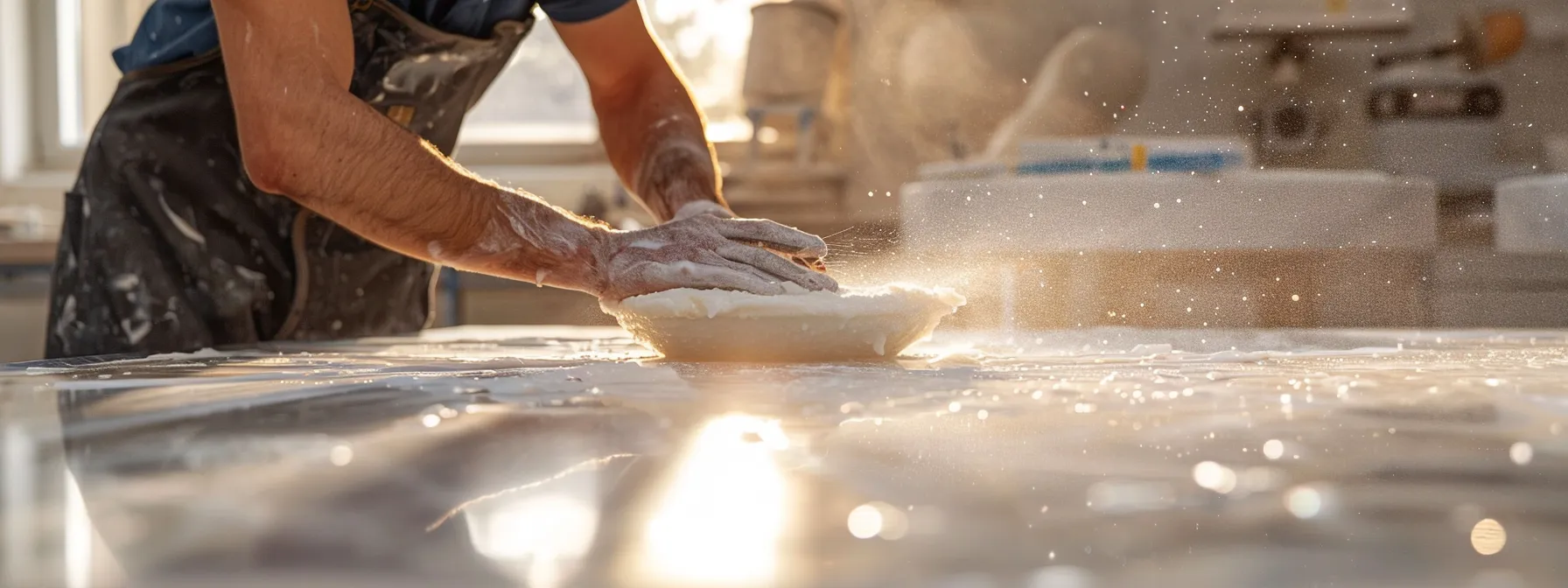
Introduction to Benchtop Resurfacing
Benchtop resurfacing involves applying a new finish to existing surfaces, enhancing their appearance without the need for total replacement in bathrooms and kitchens. This process offers various benefits, including cost savings and minimal disruption compared to replacements. You will learn about the common materials used, such as marble, and how a handyman can achieve a quality finish. Understanding these aspects can help you make informed decisions, especially when considering warranty options and additional services like cabinet painting.
Understanding What Benchtop Resurfacing Involves
Benchtop resurfacing is a practical solution that enhances the beauty and functionality of surfaces in your kitchen or bathroom. The process typically involves applying a new finish, such as resin or laminate, over your existing benchtops made from materials like laminate or steel. This method not only revitalizes your countertops but also minimizes waste and the need for extensive renovations, making it an eco-friendly choice for property owners.
One of the significant aspects of benchtop resurfacing in Bathrooms and Kitchens is its cost-effectiveness. Instead of replacing your countertops entirely, resurfacing provides an affordable alternative, allowing you to achieve a fresh look without the hefty price tag. For instance, if your laminate benchtop has seen better days, resurfacing can restore its finish and improve its resistance to wear and tear, which is crucial for areas near high-use items like a dishwasher.
Understanding the materials involved in the resurfacing process can further guide your decision. Different materials, including resin and various forms of lamination, can be tailored to fit your interior design preferences. By selecting the right finish, you can ensure that your newly resurfaced benchtops not only look great but also align with your overall kitchen or bathroom aesthetic.
Advantages of Resurfacing Over Replacing
When you consider the average cost of benchtop resurfacing, one key advantage is the potential for significant savings compared to complete replacement. Rather than purchasing new materials, which can be expensive, resurfacing existing surfaces can rejuvenate their appearance for a fraction of the price. This is particularly beneficial for countertops made from durable materials like quartz, which can still show wear and tear over time. Resurfacing offers a practical solution that allows you to maintain the quality of your surfaces while keeping costs manageable.
Another advantage of resurfacing is the minimal disruption it causes in your home. Unlike full replacements that often require extensive demolition, resurfacing can usually be done quickly and efficiently. This means you can avoid unnecessary mess and remain in your space while the work is completed. Whether it’s your kitchen bench or bathroom countertops, a resurfacing project often takes less time and results in less stress, making it an appealing option for those who want to “do it yourself” or hire a professional while maintaining their daily routine.
Finally, resurfacing extends the life of your existing surfaces by applying new finishes that enhance durability. This is especially valuable for high-traffic areas near sinks or appliances, where grout joint integrity and surface condition can deteriorate quickly. By resurfacing, you not only improve the aesthetics but also boost the longevity of your benchtops. This approach ultimately leads to a smarter investment, helping you avoid frequent repairs and replacements down the line.
Common Materials Used in Resurfacing Projects
When choosing materials for benchtop resurfacing, you may encounter wood veneer as an excellent option for a warm, natural look. This material not only adds aesthetic appeal but is also lightweight and cost-effective. Being a thin layer of real wood, veneer offers the beauty of wood without the hefty price tag of solid wood surfaces.
If you’re looking for a durable and versatile choice, consider butcher block. This material is popular for its ability to withstand heavy use in kitchens while providing a classic charm. With proper sealing, butcher block surfaces can resist moisture and stains, making them an ideal selection for daily kitchen tasks.
Solid surface materials, like those made from acrylic and polyester, provide a seamless finish and are easy to maintain. They can be shaped to fit various designs and come in a range of colors and patterns. Additionally, tile resurfacing can also be effective, especially for areas needing durability and ease of cleaning, whether it’s in the kitchen or a bathroom setting.
Benchtop resurfacing can breathe new life into your space, making it both practical and beautiful. But before you start, it’s important to understand what factors will influence the costs involved.
Key Factors That Affect Benchtop Resurfacing Costs
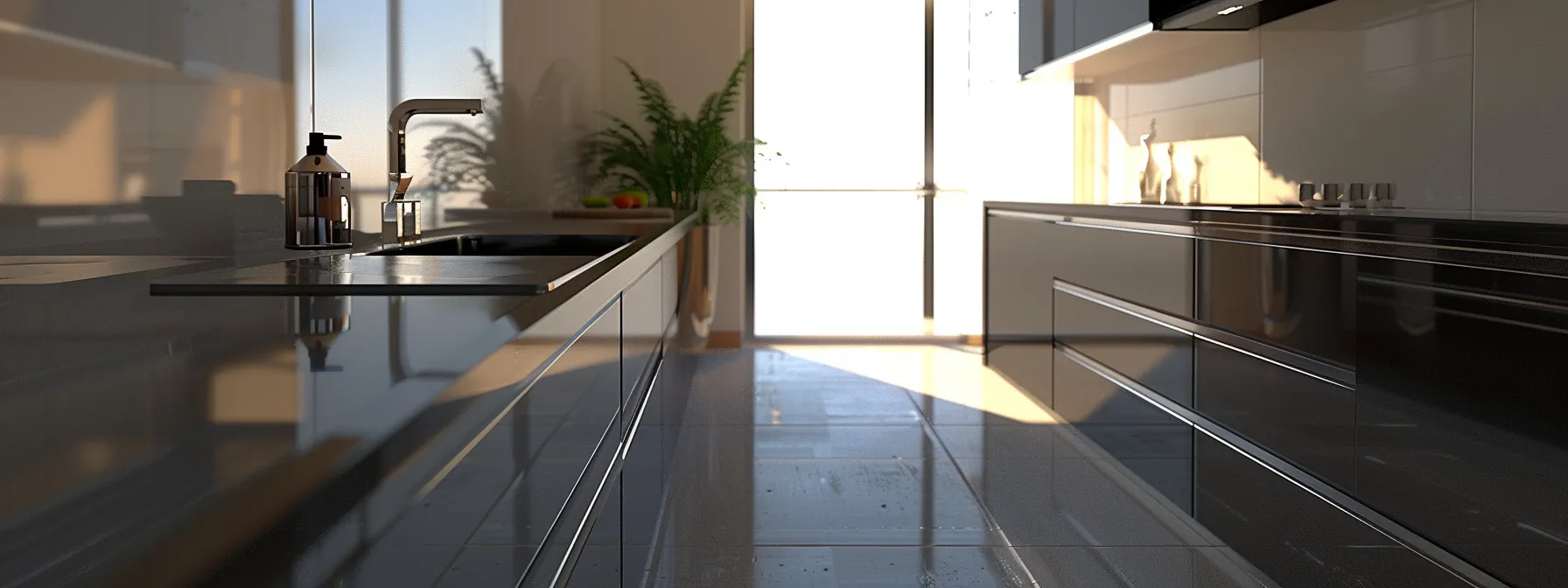
Key Factors That Affect Benchtop Resurfacing Costs
Material choices significantly impact costs; options like epoxy, porcelain, and granite vary in price. The size and complexity of your benchtop area also influence expenses, as larger or uniquely shaped surfaces require more effort. Labor rates and professional fees differ by region, and custom features or enhancements further alter the overall investment. Understanding these factors will help you achieve a favorable return on investment.
Material Choices and Their Price Implications
Your choice of materials is a crucial factor affecting the cost of benchtop resurfacing. Options like stainless steel are known for their durability and modern appearance, but they can come with a higher price tag. Conversely, materials such as laminate or wood veneer are more affordable and offer great aesthetic appeal, especially in kitchen and bathroom settings.
The condition of your existing countertop also plays a significant role in the resurfacing process. If your surface requires extensive preparation, such as sanding with sandpaper to achieve a smooth finish, costs will increase. The quality of the underlying cabinetry and the type of lighting in the area may also require adjustments to ensure the new finish matches seamlessly.
Ultimately, the right material can enhance both the look and functionality of your surfaces. By carefully considering how each material suits your needs, you can make a well-informed decision that fits your budget while transforming your space. Key factors to consider include:
- Durability of materials, such as stainless steel versus laminate.
- Preparation required, including sanding and repairs.
- Compatibility with existing cabinetry and lighting.
Size and Complexity of the Benchtop Area
The size and complexity of your benchtop area are primary factors that influence the costs of resurfacing. A larger surface area, such as a sprawling kitchen or pantry, requires more materials, time, and labor. This can increase the overall price compared to a smaller space with simpler shapes, making it essential to accurately measure your surfaces before seeking quotes.
Additionally, if your benchtops have intricate designs or are part of a cabinetry construction that involves multiple surfaces, the labor involved will rise correspondingly. Surfaces that require cutting around doors or other fixed installations can complicate the job, making the process more time-intensive. Engaging with a professional service can provide insights into how these complexities impact labor rates and material costs.
When assessing resurfacing costs, also consider the condition of your existing structures. If your benchtops are already in good shape, resurfacing may be straightforward and less expensive. However, if repairs are needed to address previous wear, this will add to the expense. Understanding these aspects will equip you to make informed decisions about your resurfacing project:
- Evaluate the size of your benchtop area.
- Consider the complexity of the design and materials.
- Assess the need for repairs before resurfacing.
Labor Rates and Professional Fees
Labor rates and professional fees are significant components that impact the overall cost of benchtop resurfacing. Depending on your location and the expertise of the craftsman, these rates can vary. If you choose to work with someone experienced in handling various materials like wood or particle board, you often gain reassurance about the longevity of the work done. Skilled professionals bring with them knowledge of the best adhesives to use, ensuring that the finish adheres properly and lasts for years to come.
When you hire a professional for resurfacing, consider not only the labor rate but also the quality assurance they provide. A reputable craftsman typically includes warranty options that protect your investment over time. This can be particularly important when dealing with materials like particle board that require careful handling to avoid moisture damage. Investing in a professional service that understands how to work with these materials can save you from costly repairs later.
Keep in mind that while hiring a professional may seem like an added expense upfront, it actually serves as a cost-saving measure in the long run. A quality resurfacing job can enhance the lifespan of your countertops and minimize the need for frequent renovations. You benefit from expert advice on maintaining your surfaces, which is crucial for preserving their appearance and durability:
Location-Based Cost Variations
Location plays a significant role in the cost of benchtop resurfacing. In urban areas, you might find higher labor rates due to the demand for skilled professionals. For instance, if you live near a bustling city, resurfacing a benchtop near your cooktop or drawer area could command more attention in pricing compared to rural regions where costs tend to be lower.
The complexity of your project can also impact pricing. If your benchtop has intricate designs or requires additional work to sand down the surface, this will contribute to a more expensive quote. Specifically, if you need to accommodate a unique layout or custom features, these factors can add to the overall cost, independent of your location.
Additional Features and Customizations
When considering additional features for your benchtop resurfacing project, you may find that various upgrades can enhance both functionality and aesthetics. For instance, incorporating solid wood accents can add warmth to your kitchen or bathroom while improving overall design cohesion. Homeowners who choose to integrate these custom features often see a return on investment, especially when it comes to durable surfaces that stand up to wear and tear.
Water damage can be a significant concern for many homeowners, particularly in areas with high moisture, such as kitchens and bathrooms. By selecting advanced protective finishes or moisture-resistant materials during resurfacing, you can mitigate this risk. Consulting with a general contractor who understands your specific needs can guide you in choosing features that provide better protection against water damage while enhancing the longevity of your counters.
Customizations like integrated sinks or unique edge treatments also play a role in the overall cost of resurfacing. These enhancements not only elevate the appearance but also contribute to the practical use of your countertop space. By discussing your vision with a professional, you can explore options that align with your design goals while ensuring your benchtop remains functional and declines the chances of damage over time.
Understanding what affects resurfacing costs helps you make informed choices. Now, let’s break down the average cost to see how it fits into your budget.
Breaking Down the Average Cost of Benchtop Resurfacing
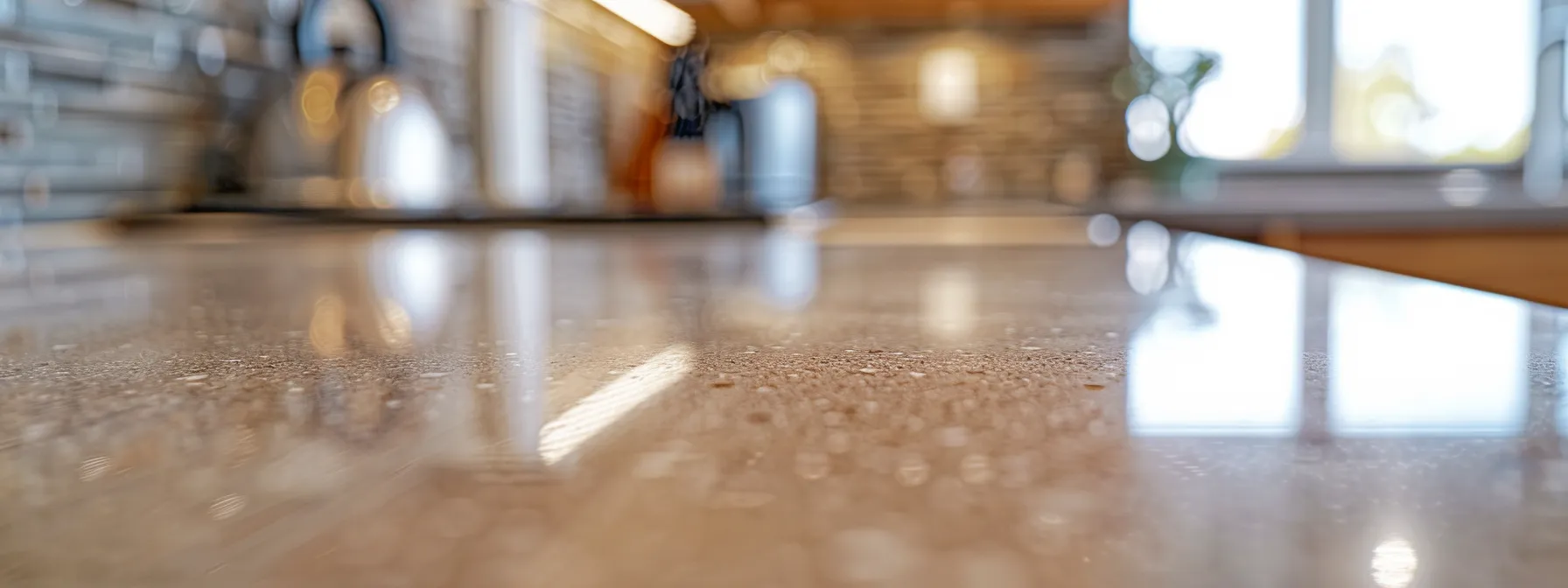
Understanding the average cost of benchtop resurfacing involves several key factors. You will explore the typical price range for resurfacing projects, providing insight into what to expect. Comparing costs of materials like oak versus laminate will highlight options for your home improvement. Finally, evaluating DIY costs versus professional services will help you make informed choices regarding sealant and installation.
Typical Price Range for Resurfacing Projects
The typical price range for resurfacing projects can vary depending on the materials used and the complexity of your specific needs. For instance, opting for slate materials can cost between $40 to $75 per square foot due to their durability and aesthetic value. If you’re considering a makeover with thermofoil finishes, you might find the price range to be more affordable, typically about $25 to $50 per square foot, making it a popular choice for budget-conscious renovations.
Brand reputation also plays a significant role in pricing. Established brands that offer high-quality resurfacing products may charge more, but they often provide better durability and aesthetics. The investment in these premium brands can pay off, especially if you incorporate elements like crown molding into your design, which can enhance the overall appeal of your kitchen or bathroom, adding just a bit more to the cost.
Ultimately, evaluating your needs against your budget will help you determine the best choices for your resurfacing project. When assessing costs, consider whether you will use a professional service or take a DIY approach, as this can greatly impact the final expenditure. By exploring your options and understanding the varying price ranges, you can make an informed decision that aligns with your home improvement goals:
Comparing Costs of Different Resurfacing Materials
When comparing costs of different resurfacing materials for your kitchen remodel, you’ll find that options vary greatly in price and application. For example, laminate surfaces generally remain one of the most affordable choices, making them ideal for budget-conscious projects in both kitchens and bathrooms. On the other hand, materials like concrete may have higher initial costs, but they offer a unique aesthetic and unmatched durability that can enhance the overall value of your home.
Choosing the right material also depends on your functionality needs and design preferences. For instance, if you prioritize easy maintenance and a sleek finish, solid surface materials may be the best fit. While they typically come at a higher price point, their seamless appearance and resistance to staining make them popular for spaces like kitchen cabinets, ensuring long-lasting satisfaction.
It’s also essential to consider long-term costs associated with each material. Durable options such as quartz and concrete may require a higher upfront investment but can save you money over time by minimizing the need for repairs or replacements. As you explore materials for your resurfacing project, think about these aspects to make a well-informed decision that aligns with your vision and budget while embodying the spirit of companies like Imagine Unlimited Solutions.
Evaluating DIY Costs Versus Professional Services
When considering a benchtop resurfacing project, you might weigh the option of doing it yourself against hiring a professional service. DIY kitchen remodeling can be appealing, especially if you’re looking to save money. However, without proper experience, you may encounter challenges, particularly when dealing with materials like ceramic or porcelain tile, which require specific installation techniques to avoid issues like mold growth.
On the other hand, hiring a professional for your resurfacing project can provide peace of mind. Experienced professionals know how to work with various materials, ensuring that your resurfacing is completed correctly. They can also navigate common pitfalls, such as ensuring that plastic surfaces adhere properly, which is vital for a long-lasting finish.
Ultimately, while DIY may seem less expensive initially, the costs of mistakes can add up quickly, especially if repairs are needed later. By investing in professional services, you not only enhance the quality of the resurfacing but also gain invaluable advice on maintaining your surfaces. This is crucial for achieving the best results from your kitchen remodeling investment.
Now that you know the costs involved, you must find out how to get a reliable quote for your project. A clear estimate will help you decide wisely, guiding you to your resurfacing goals.
How to Obtain an Accurate Resurfacing Quote
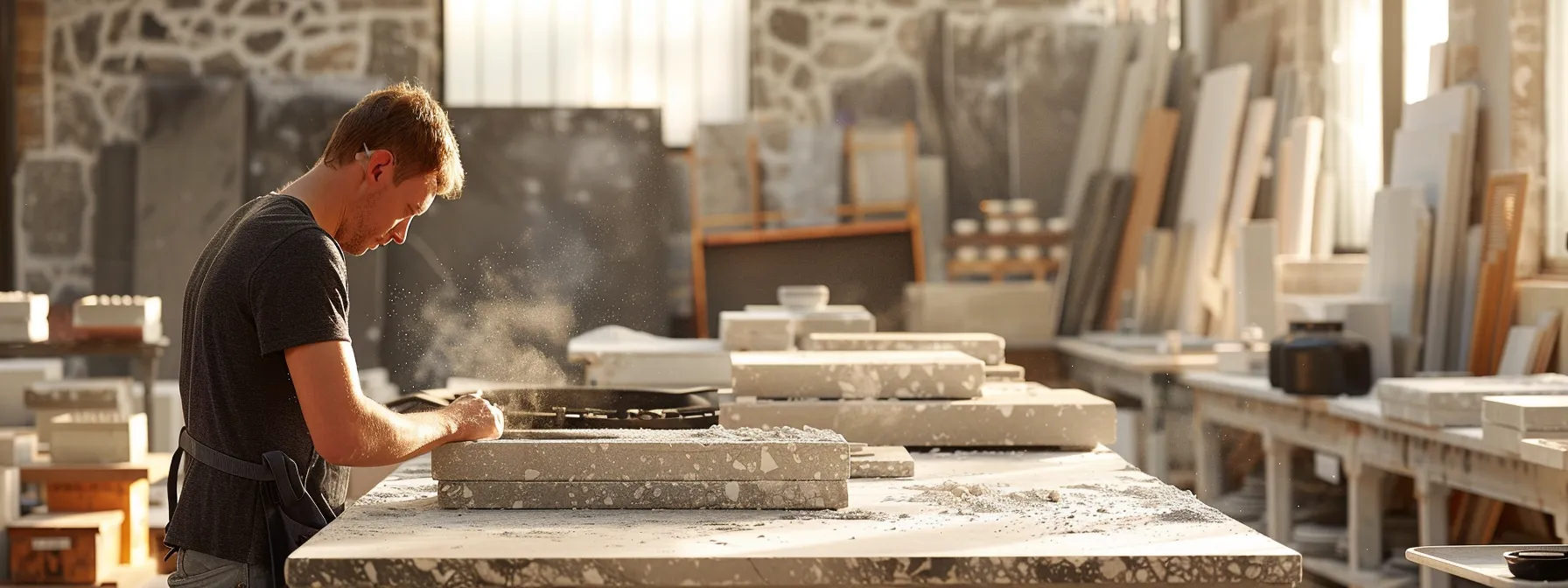
To obtain an accurate resurfacing quote for your benchtop, assess the condition of your current surface, particularly around areas like the stove where dust accumulation can affect adhesion. Next, select a suitable resurfacing material, like Caesarstone, that meets your design preferences. Finding and choosing a qualified professional is crucial. You’ll want to ask essential questions to potential contractors and interpret the details in their estimates to ensure a comprehensive understanding of costs.
Assessing the Condition of Your Current Benchtop
Assessing the condition of your current benchtop is the first step in obtaining an accurate resurfacing quote. Take a close look at the surface for any signs of damage, such as cracks, chips, or stains. These imperfections not only affect the aesthetics of your kitchen or bathroom but also influence the resurfacing process and cost.
You should also examine areas that experience high use, like around sinks or dishwashers. Signs of wear, such as discoloration or denting, can affect how well the new finish adheres. Documenting these conditions will help you provide detailed information to professionals, ensuring you receive a more accurate quote for your resurfacing project.
Lastly, consider the material of your benchtop. Different materials may require various approaches for resurfacing, which can impact labor costs. Knowing whether your surface is laminate, solid wood, or stone will aid in obtaining precise quotes based on the specific material challenges, such as sanding needs or the type of adhesive used:
Selecting the Most Suitable Resurfacing Material
When selecting the most suitable resurfacing material for your benchtop, you need to consider both functionality and aesthetics. Popular options include laminate, quartz, and solid surface materials, each offering unique advantages. For instance, laminate is often the most economical choice, while quartz provides durability and a high-end look that elevates your space.
Your decision should also factor in the maintenance requirements of each material. Some surfaces, like laminate and quartz, are easier to clean and maintain compared to other options that may require special care or periodic sealing. By examining how much upkeep you want to commit to your benchtop, you can choose a material that aligns with your lifestyle and preferences.
Additionally, consider your budget when selecting a resurfacing material. Different materials carry varying price points, and it’s essential to weigh the initial cost against potential long-term benefits. For example, while a higher-end material may require a larger investment upfront, its durability can save you money on repairs or replacements in the future:
Finding and Choosing a Qualified Professional
Finding a qualified professional for benchtop resurfacing is crucial to ensuring a successful project and satisfactory results. Start by seeking recommendations from friends, family, or local online community groups. Look for reviews and feedback about their experiences with resurfacing services to help guide your decisions.
Next, check the credentials of potential contractors. Ensure they are fully licensed and insured, which protects you in case of mishaps during the work. When narrowing down options, consider reaching out to several contractors for quotes and ask about their previous experience with resurfacing similar materials.
Finally, when you meet with professionals, ask relevant questions to gauge their knowledge and techniques. Inquire about the materials they recommend and inquire about warranties they offer on their work. Evaluating these factors can lead to selecting a contractor who meets your needs effectively. Your next steps should include:
- Gathering recommendations from trusted sources.
- Checking licenses and insurance for protection.
- Requesting quotes from multiple professionals.
- Asking about past experiences and warranties offered.
Essential Questions to Ask Potential Contractors
When you talk to potential contractors for benchtop resurfacing, start by asking about their experience and qualifications. Knowing how long they have been in the business and the types of projects they’ve completed will help you gauge their expertise. Be sure to request examples of previous work or references from satisfied clients to understand their quality of service better.
Next, inquire about the materials they recommend for your specific resurfacing project. Understanding the options available, like laminate or solid surfaces, will allow you to make an informed decision based on durability and appearance. A knowledgeable contractor should be able to explain the advantages and disadvantages of each material in relation to your space and budget, ensuring you choose wisely.
Finally, discuss warranties and post-project support. Knowing what guarantees the contractor offers, especially on the materials and labor, can give you peace of mind regarding your investment. Make sure to ask about their policy on resolving any potential issues after the resurfacing is completed:
- Ask about their experience and qualifications.
- Inquire about recommended materials and their pros and cons.
- Discuss warranties and post-project support options.
Interpreting the Details in a Resurfacing Estimate
When you receive a resurfacing estimate, the first step is to examine the breakdown of costs clearly. Look for detailed line items that outline materials, labor, and any additional fees. Understanding each component will help you identify where your budget is allocated and ensure you’re not overlooking any charges associated with the resurfacing process.
Next, pay attention to the estimated timeline included in the quote. A professional resurfacing project may vary in duration based on your specific benchtop’s size and complexity. Knowing the schedule can help you plan your daily activities, ensuring minimal disruption to your routine while the resurfacing work is completed.
Finally, delve into the warranty and service guarantees mentioned in the estimate. A reputable contractor should provide information about their warranty policies on both materials and workmanship. This offers peace of mind, as it indicates the contractor’s confidence in delivering a quality resurfacing job, protecting your investment in your kitchen or bathroom project.
You’ve learned how to get a fair quote for resurfacing. Now, let’s look at ways to keep those costs low when resurfacing your benchtop.
Strategies to Minimize Benchtop Resurfacing Expenses
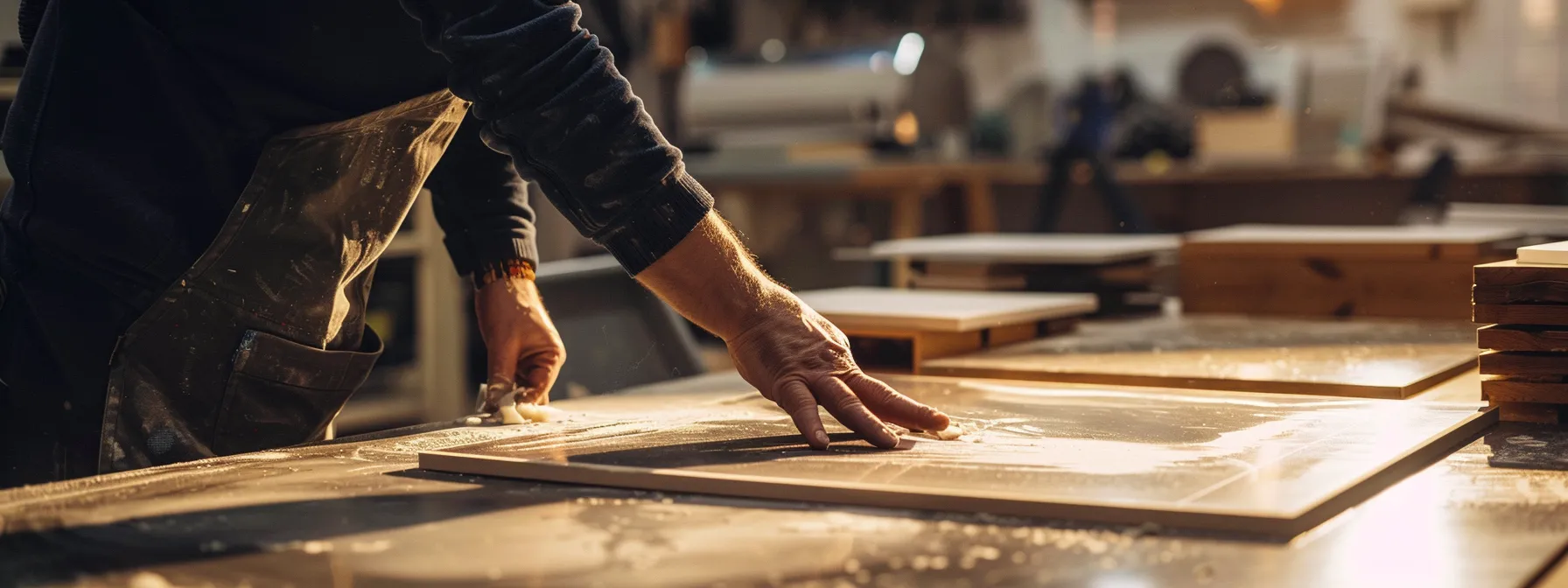
To minimize your benchtop resurfacing expenses, consider several strategies. First, choose budget-friendly materials that maintain quality without breaking the bank. Scheduling your project during cost-effective times can lead to better rates. Additionally, combining services may result in discounts. Finally, conducting preliminary work yourself can significantly reduce costs while preparing for a successful resurfacing project.
Choosing Budget-Friendly Materials Without Sacrificing Quality
Selecting budget-friendly materials for your benchtop resurfacing project can significantly impact your overall costs without compromising on quality. Consider opting for laminate or engineered stone, both of which provide durability and a pleasing appearance at a more affordable price compared to natural stones like granite or quartz. These materials not only meet practical needs but also allow you to create a stylish space that aligns with your design vision.
Another effective strategy is to explore mid-range materials that offer great value, such as solid surface materials. These surfaces are often easier to maintain and can replicate the look of more expensive options while being less taxing on your budget. By choosing a solid surface, you benefit from a high-quality finish that enhances your kitchen or bathroom while keeping your expenses in check.
Finally, understanding the life cycle of the materials you choose can further guide your decisions. Investing in a durable material might require a higher initial expense but can save you money in repairs and replacements down the line. By focusing on materials that strike a balance between affordability and longevity, you can achieve a successful resurfacing project that meets both your aesthetic and budgetary goals.
Scheduling the Project During Cost-Effective Times
One effective way to minimize your benchtop resurfacing expenses is to schedule your project during off-peak seasons. Many professionals experience fluctuations in demand throughout the year, often leading to lower rates during less busy times. By planning your resurfacing project during these cost-effective periods, you can take advantage of discounts and potentially save a significant amount on labor costs.
Another strategy is to be flexible with your project’s timing. If you can align your resurfacing with other home improvement tasks, such as cabinet painting or flooring updates, you may negotiate a better overall rate. Contractors often appreciate the opportunity to bundle services, which can lead to substantial savings for you while ensuring a cohesive look in your kitchen or bathroom.
Lastly, consider the benefit of planning your resurfacing project around holiday sales or promotions. Many suppliers and contractors may offer special deals during major holidays or events, making it an ideal time to start your project. Keeping an eye on industry promotions and discounts can help you maximize your budget while achieving the high-quality finish you desire for your benchtops.
Combining Services for Better Rates
Combining services can be an effective way to reduce your overall costs during benchtop resurfacing projects. When you schedule multiple services, such as resurfacing your countertops alongside kitchen cabinet painting, contractors may offer bundled rates or discounts. This not only streamlines the projects but also saves you money while enhancing the aesthetics of your space.
It may also benefit you to collaborate with a professional who provides comprehensive home improvement services. By choosing a contractor with expertise in both resurfacing and other renovations, you can establish a cohesive project that meets all your needs. This approach can lead to better communication and efficiency, resulting in a smoother process from start to finish.
Finally, consider discussing your project timeline with potential contractors. If you can align your resurfacing work with other home improvements, such as flooring or sink installations, you might find additional savings. Many professionals appreciate the opportunity to coordinate services, which can lead to reduced labor costs overall and ensure that your renovations are completed with a unified vision.
Performing Preliminary Work to Reduce Costs
Performing preliminary work can be an effective way to minimize your benchtop resurfacing costs. By addressing any existing damage or imperfections, such as scratches or stains, you can lower the amount of preparation work a professional will need to do. Taking the time to clean and repair your current surfaces will not only enhance the final result but can also lead to significant savings on labor costs.
Another way to reduce expenses is by removing any items from the benchtop area prior to the resurfacing project. This includes taking off appliances, cookware, and decorations that may be in the way. By preparing the space yourself, you help streamline the resurfacing process, making it easier for the contractor to get started and minimizing any potential delays that could increase costs.
Engaging in small repairs or touch-ups on your countertops can have a big impact on the overall resurfacing cost. If your laminate or wood surfaces have minor nicks or chips, addressing these issues early will save you from unnecessary additional fees later. A well-maintained surface not only looks better but also contributes to a smoother resurfacing experience, ultimately leading to a more cost-effective project.
You’ve picked up some smart ways to keep resurfacing costs down. Next, let’s tackle the questions you have about these expenses and what you need to know.
Frequently Asked Questions About Resurfacing Costs
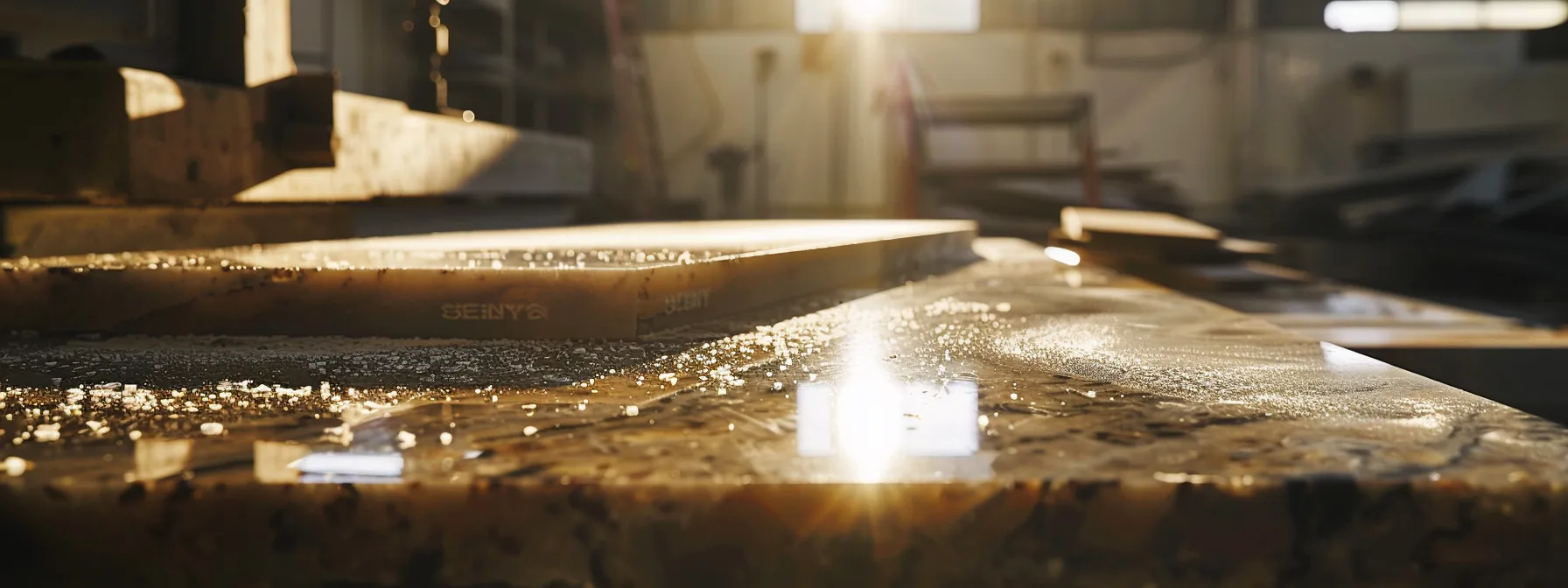
When considering benchtop resurfacing, it’s essential to address common questions to understand its financial and practical implications. You may wonder if resurfacing is more affordable than replacing a benchtop, what lifespan to expect after resurfacing, and which types of benchtops are suitable for this process. Additionally, knowing which materials provide the best value for money can aid your decision-making.
Is Resurfacing More Affordable Than Replacing a Benchtop?
When considering whether to resurface or replace your benchtop, resurfacing typically presents a more affordable option. You can achieve the desired look and functionality at a fraction of the cost of a complete replacement. Many homeowners find that resurfacing their existing materials significantly reduces expenses while still providing a refreshed appearance.
In addition to being cost-effective, resurfacing creates minimal disruption in your home. Unlike replacement, which often involves tearing out existing materials and lengthy installations, resurfacing can be completed quickly. This means you can enjoy your upgraded space sooner, all while avoiding the headaches associated with major renovations.
Ultimately, resurfacing not only saves you money upfront but can also extend the lifespan of your existing benchtops. By applying new finishes that improve durability, you lay the foundation for long-term satisfaction. This proactive approach not only enhances the aesthetic appeal but also gives you confidence in your investment for years to come.
What Is the Expected Lifespan of a Resurfaced Benchtop?
The expected lifespan of a resurfaced benchtop largely depends on the materials used and the level of care you provide. Generally, you can anticipate that a professionally resurfaced benchtop will last between 5 to 10 years, although certain high-quality materials may extend this lifespan even further. It’s essential to consider the daily wear and tear your benchtop will experience, especially in high-traffic areas like kitchens and bathrooms.
To maximize the durability of your resurfaced benchtop, proper maintenance is key. Regular cleaning and the use of gentle cleaning agents can help to protect the surface from damage. Additionally, avoiding excessive heat and using cutting boards can prevent scratches and prolong the finish’s integrity, ensuring you get the most value out of your investment.
In summary, understanding the expected lifespan of a resurfaced benchtop enables better planning for your home improvement projects. Choosing high-quality materials and adhering to maintenance tips can lead to a more satisfying and durable outcome. Consider the following key aspects when making your decision:
- Material quality affects durability.
- Maintenance practices play a critical role in lifespan.
- Proper care can extend the life of your resurfaced benchtop.
Are All Types of Benchtops Suitable for Resurfacing?
Not all types of benchtops are suitable for resurfacing. While materials like laminate, solid surface, and quartz respond well to resurfacing techniques, some surfaces, such as natural stone or heavily damaged materials, may not achieve the desired outcome. It’s important to evaluate the condition of your benchtop and its material to determine if resurfacing is a viable option.
For example, laminate surfaces are ideal candidates for resurfacing due to their ability to accept new finishes effectively. Conversely, if you have a wooden benchtop with severe warping or deep gouges, it may require replacement rather than resurfacing. Therefore, assessing your current benchtop allows you to make informed decisions and avoid unnecessary expenses.
Before proceeding with a resurfacing project, consider consulting with a professional to evaluate your benchtop’s compatibility with resurfacing treatments. They can guide you in understanding the limitations and advantages based on your specific situation, helping you achieve the best results possible:
- Materials best suited for resurfacing: laminate, solid surface, quartz
- Different materials require varying levels of care and attention
- Consult professionals for expert evaluations and recommendations
Which Benchtop Materials Offer the Best Value for Money?
When considering value for money in benchtop materials, laminate is often one of the most favorable options. This material provides an economical solution with a wide variety of colors and designs that can easily match your kitchen or bathroom decor. Its affordability combined with decent durability makes it a popular choice for many homeowners looking to enhance their space without overspending.
Another material worth considering is quartz, which offers an attractive blend of aesthetics and performance. While it does come at a higher initial cost compared to laminate, quartz is highly durable and resistant to stains, heat, and scratches. This longevity makes it a smart investment, as it reduces the likelihood of needing repairs or replacements in the near future.
Solid surface materials also present a valuable option, striking a balance between aesthetics and functionality. They provide a seamless look and are easy to maintain, which can be particularly advantageous in high-use areas like kitchens. Choosing solid surfaces might involve a slightly higher upfront cost, but their durability and low maintenance requirements justify the investment over time, ensuring your resurfacing project remains cost-effective.
Conclusion
Understanding the average cost of benchtop resurfacing is essential for making informed renovation decisions. By evaluating factors like material choices, project size, and professional fees, you can create a realistic budget that aligns with your design goals. Opting for resurfacing over replacement not only saves money but also minimizes disruption in your home. This knowledge empowers you to enhance your kitchen or bathroom effectively while ensuring a smart investment for the future.
